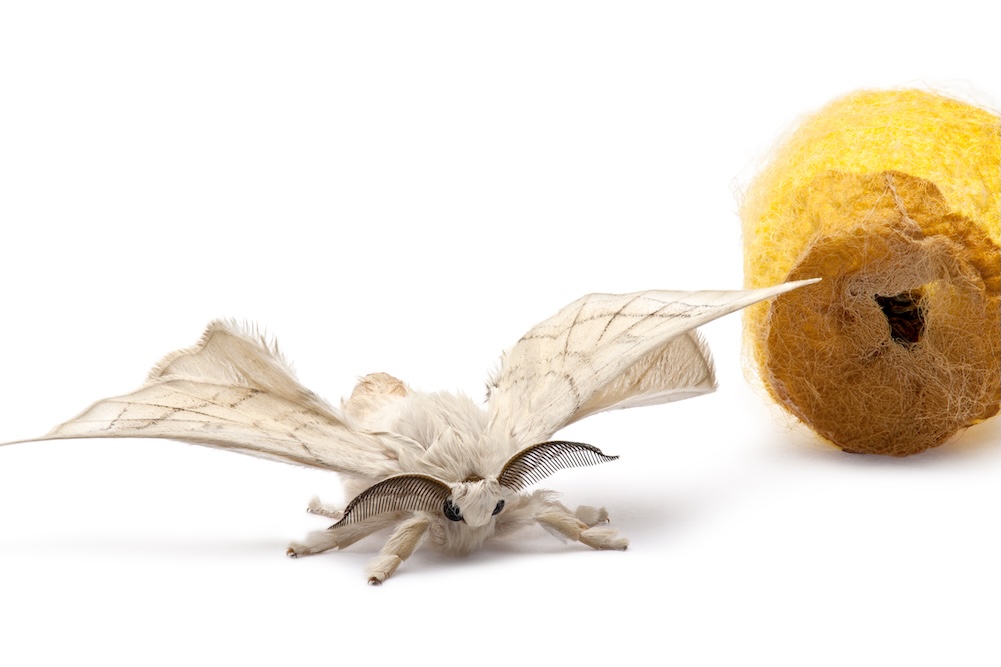The word “natural” carries power. It suggests purity, harmony, and a connection to the Earth. Marketers know this, and consumers often accept it without question. But not everything labeled “natural” is ethical, sustainable, or even kind. Few examples highlight this contradiction more clearly than silk.
Silk is celebrated as the world’s most luxurious natural fiber — soft, shimmering, and biodegradable. Yet its production depends on boiling billions of silkworms alive, cutting short a life cycle in the name of fabric. The truth behind silk exposes how easily the word “natural” is blurred to justify human needs and desires.
What Makes Silk “Natural”?
On the surface, silk seems like the definition of natural.
- It comes from a living creature: the Bombyx mori silkworm.
- The fiber is protein-based, not synthetic.
- It biodegrades instead of persisting as microplastic.
For these reasons, silk is positioned as a more sustainable, eco-friendly choice compared to polyester or nylon. But “natural” here refers only to the origin of the fiber — not the process that brings it to market.
The Cruelty Behind the Shine
In nature, a silkworm spins its cocoon, rests, and emerges as a moth. In sericulture, that cycle is disrupted.
- Cocoons are boiled or steamed to kill the pupa before it can emerge.
- This preserves the long, unbroken filament used for weaving.
- Without intervention, the moth would break the cocoon, creating shorter threads less desirable for fabric.
The result: billions of silkworms are killed each year to keep silk “pure.” One silk blouse can require 2,000–3,000 cocoons.
This reality is rarely included in marketing campaigns. Instead, consumers are told they are buying “natural luxury.”
When “Natural” Becomes a Mask
Silk shows how “natural” becomes a mask — hiding systems of control, cruelty, and extraction.
- Domestication: The Bombyx mori silkworm has been so domesticated it cannot survive in the wild. It exists only for human use.
- Industrialization: Farms raise silkworms in controlled environments, treating them as raw material, not living beings.
- Chemical processing: After pupae are boiled, fibers undergo degumming, bleaching, and dyeing, polluting rivers and soils.
Calling silk “natural” erases these truths. It reframes cruelty as purity.
The Environmental Price
Beyond ethics, silk carries a surprisingly heavy ecological footprint.
- Mulberry cultivation for silkworm feed requires significant land and water.
- Fertilizers and pesticides used in farming contribute to soil and water contamination.
- Life-cycle assessments show silk has one of the highest greenhouse gas emissions per kilogram of fabric among natural fibers.
The elegance of silk doesn’t match the reality of its carbon and water footprint.
Why We Accept the Label
Silk isn’t the only case where “natural” is blurred to reassure consumers. We see it across industries:
- “Natural gas” — a fossil fuel marketed as clean despite methane emissions.
- “Natural flavors” — chemical additives sourced from plants but processed beyond recognition.
- “Natural textiles” — cotton, leather, and silk, often linked to deforestation, water stress, and animal suffering.
“Natural” soothes the conscience. It allows consumption to feel less destructive, even when the truth is otherwise.
Alternatives to Conventional Silk
Awareness is leading some producers to develop alternatives:
- Peace silk (Ahimsa silk): Moths are allowed to emerge before cocoons are processed, though efficiency is lower.
- Bioengineered spider silk: Companies are creating lab-grown fibers with the qualities of silk, without insects.
- Plant-based alternatives: Lyocell, hemp, and bamboo can mimic silk’s drape and softness.
These options show that beauty doesn’t need cruelty — and that “natural” isn’t the only path to sustainable textiles.
What We Can Learn from Silk
Silk forces us to confront a broader question: how often do we let the word “natural” excuse exploitation?
- We see it in energy systems, food systems, and fashion.
- We use it to separate ourselves from the guilt of harming animals, ecosystems, or workers.
- We forget that what’s “natural” for the planet may not be aligned with what we define as “luxury.”
When we strip away the marketing, silk is not a story of purity but of power — human power over life, dressed up as elegance.
FAQs
Is silk really sustainable?
Not by most measures. It biodegrades, but its production has high emissions, water use, and ethical costs.
Do silkworms suffer?
Science doesn’t fully answer this, but boiling billions of living creatures alive for fabric is a moral question, not just a scientific one.
Are there truly cruelty-free silks?
Peace silk and lab-grown alternatives offer more humane paths, though they are less widely available and often more expensive.
Why does marketing lean so heavily on “natural”?
Because “natural” sells. It conveys trust, safety, and harmony — even when the system behind the product is far from it.
Final Thoughts
Silk’s story is a cautionary tale. It reminds us that “natural” is not the same as sustainable, ethical, or harmless. Luxury can be cruel, and beauty can conceal suffering. The elegance of silk comes with a cost — not just to the environment, but to billions of silkworms whose lives are cut short for human desire.
If we want a future that is truly sustainable, we need to look past marketing labels and confront the systems they obscure. Natural is not enough. We must demand ethical, sustainable, and compassionate.









Reader Interactions